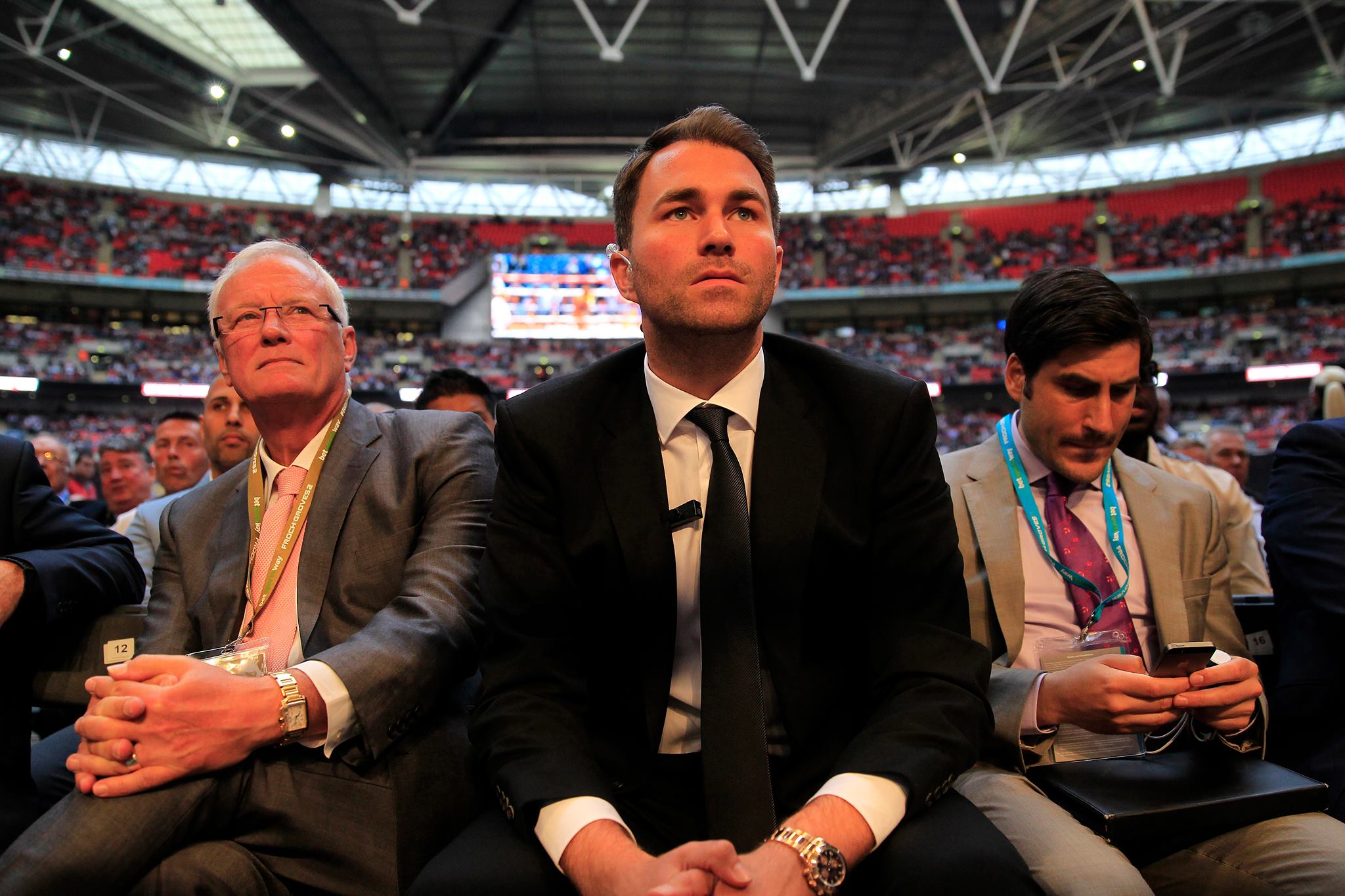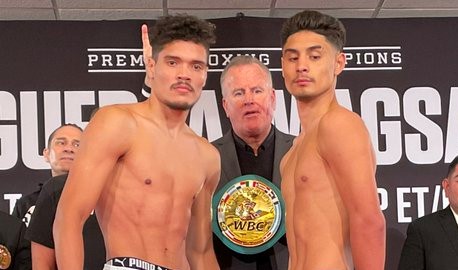By Chance Solem-Pfeifer
Two rounds before Lucas Matthysse allowed himself to be counted out on Oct. 3, thus surrendering a junior welterweight title and his unbreakable reputation to Viktor Postol, you could see he’d given up.
Before the tenth round knockout, the power-punching Matthysse seemingly resigned himself to a helpless life on the end of the challenger Postol’s stinging jabs and long straight right hands. This, after find fleeting, but concussive, success in the sixth and seventh rounds, catching Postol flush with overhand rights and left hooks by leaping inside and around the Ukrainian’s longer punches.
Now, why Matthysse quit — both on the canvas and strategically in the preceding rounds — is interpretable through living room sofa psychoanalysis and guesswork. But the highly regarded Argentine was certainly tagged more often and harder early this year by the brick-fisted Ruslan Provodnikov. On Saturday, it appeared a large part of Matthysse’s mental disintegration hinged on Postol’s significant height and reach advantages, nearly five inches by both measurements.
Losing by a half-dozen rounds on the cards, Matthysse hadn’t just been physically defeated. He was in an unenviable strategic pit, unable to even reach a fighter (who supposedly didn’t have the power to knock him out) without taking punishment. And then in the tenth, Postol landed the overdue, perfectly planted right hand, set up by a timely feint that caused Matthysse to lunge into its velocity.
The 5’11, 140 lb., Postol’s dramatic victory set me off wondering about the signature all-time victories by rangy fighters, when a set of physical advantages coalesced with skill for an upset or a statement win against a dangerous opponent.
There’s no exact science or body proportion measurements at work here, but by “rangy,” we’re denoting a slight build, especially by comparison to the stockier, often scarier-looking fighters who took the loss.
Let’s start with a win by the undefeated junior welterweight who HBO’s Jim Lampley called out as Postol’s ideal 140 lb., opponent during Saturday’s telecast (even before the knockout). He’s another long-armed tactician: Terence Crawford.
* * *
Terence Crawford KO9 Yuriorkis Gamboa – 2014
These selections all have their quirks, with height and reach manifesting themselves in different, sometimes strange, ways. Terence Crawford’s coming out party against Cuban puncher Yuriorkis Gamboa last year certainly had its idiosyncrasies. For one, Gamboa’s blinding initial handspeed and leaping power shots ruled the night early on, and at no point did Crawford truly or responsibly seek to control the distance.
Rather, the mid-round switch to a southpaw stance invited Crawford’s punches from seemingly invisible angles to Gamboa. The main culprit was a check right hook (again, from the southpaw stance) that started the damage in the fifth round and wobbled Gamboa over and over. That particularly punch demanded so much space for Crawford’s long arm to loop toward his smaller, charging opponent, it creates the bizarre optical illusion that Crawford is punching slightly toward his own body. The twisting hook was the fatal foil to Gamboa’s brave launches, which ended in the ninth round with his hands-down stumbling around the ring at the whim of Crawford’s power shots.
Paul Williams UD12 Winky Wright – 2009
For being the first fighter many boxing fans recall if asked to name a rangy fighter, it takes some searching to find a victory where Paul Williams used his vaunted height (6’3 as a welterweight and junior middleweight) as a conventional key to victory. Williams’ marquee wins, like the first meeting with Sergio Martinez or his outhustling of Antonio Margarito, find him just tirelessly outproducing his opposition. Not to put words in Paul Williams’ mouth, but how was he going to throw a few hundred casual uppercuts and inside hooks if he was keeping opponents at the end of his jab?
Faded pound-for-pound stalwart Winky Wright finally completed the picture in 2009. Wright’s famously effective earmuff defense, and his diminished closing speed at age 37, made distance management the ideal tactic for Williams, who threw 419 jabs on his way to a near shutout on the judges’ cards. Of course, after those jabs Williams would, indeed, fight inside, routinely swimming through seven- and eight-punch combinations and tying Wright up before the older fighter could respond.
Celestino Caballero UD12 Daniel Ponce De Leon – 2005
There are many-an-awkward pair of legs on this list (Bob Foster and Tommy Hearns weren’t exactly shorts models) but Celestino Caballero’s beanpoles probably take the cake. And their remarkable effort also won him a name-making upset victory in this fight.
The 5’11 bantamweight’s dismantling of the dangerous and favored Daniel Ponce de León was all thanks to his nearly 6’2 wingspan and ceaseless footwork. Notably limited and wild to begin with, the then-undefeated Ponce de León looked irreconcilably out of sorts by the middle rounds of the 2005 contest, compensating for Caballero’s dizzying angles even when the Panamanian was simply backing up straight. On rewatch, the most stunning physical moments of this fight occur when Caballero lunges in quickly with a straight right hand that Ponce de León sees coming, but can’t seem to fathom will ever reach his face. Time and again, it did.
https://www.youtube.com/watch?v=aVoQKIOShic
Vernon Forrest UD12 Shane Mosley I – 2002
Forrest’s first meeting with Shane Mosley might be the all-time crowning win for lanky underdogs. When they met in 2002, Mosley was 38-0 with 35 knockouts, the recognized pound-for-pound king and was still riding the momentum of his first victory over Oscar De La Hoya.
Immediately, the also undefeated Forrest neutralized Mosley’s athletic gifts simply by staying out of range of his favorite weapon, the leaping left hook that later demolished Fernando Vargas, Ricardo Mayorga and Antonio Margarito. But that’s about the only way Forrest used his height and reach for safety. Otherwise, it was unexpectedly aggressive offense. Mosley had never tasted the canvas before Forrest caught him on the end of a looping right hand in the second round, and then followed up with an eye-catching uppercut on the ropes. For a sequence that’s sneakily more brutal: The waning moments of the tenth round find Forrest using one arm to hold Mosley’s head while punishing him to the body, an unlikely attack for the supposed boxer in the match.
https://www.youtube.com/watch?v=uve0X1QQzG8
Michael Nunn KO1 Sumbu Kalambay – 1989
File this one under “When Feel-Out Jabbing Goes Wrong.” It’s arguably Michael Nunn’s career best victory and the night many crowned him the rightful middleweight champion. Nunn drew the shorter and supposedly more dangerous Sumbu Kalambay into an early jabbing contest. When the Italian-Congolese technician forced the issue midway through the first round, he wound up right at the end of Nunn’s long straight left hand. A rewatch here is also a worthy, 90-second reminder of what a fluid athlete Nunn was as middleweight, especially via his footwork and head movement.
Michael Spinks UD15 Dwight Muhammad Qawi – 1983
Despite a half-foot edge in height, Michael Spinks surprisingly boasted only a two-inch reach advantage over the crouching slugger Dwight Muhammad Qawi in this light heavyweight championship fight.
And, in some ways, the perceived availability of Spinks’ head may have cost Qawi. Spinks frustrated with his customary and jerky brand of ring generalship, and Qawi swung for the fences, so much so that the Spinks often ducked in and under the smaller man’s bombs. Still, on a night when his longtime girlfriend’s death was weighing heavily on him, Spinks boxed with supreme confidence. You’d be hard-pressed to find a wasted or idle jab from Spinks in the 15 rounds. Every time it came uncorked, the left hand was meant to whack and deter Qawi. It only ever accomplished the former, but despite a few serious wobblings, Spinks unified the light heavyweight titles on his movement and skill.
https://youtu.be/z43-l4VUi0U?t=12m2s
Alexis Arguello KO14 Ray Mancini – 1981
For my money, the best available description of Alexis Arguello’s in-ring prowess comes from HBO’s documentary series Legendary Nights and the late, great Ralph Wiley. He calls Arguello a “classic boxer” in an existential fighting sense. There is no offense without an inherent lapse in defense. The three-division champion Arguello was a master of such split-second observations.
Carrying the nickname El Flaco Explosivo, or “The Explosive Thin Man”, (how’s that for entry onto this list?) Arguello fought tall at 5’10, but also squared up to his often-shorter opponents to shoot his lethal right hand. In his American star-making performance against lightweight challenger Ray Mancini, the Nicaraguan took his time, slowly coaxing the shorter brawler into a dangerous, outside fighter’s version of the bout. “Boom Boom” jabbed with, and even outworked, Arguello through the early and middle rounds, while Arguello slowly established his jab as a weapon, not a measuring stick. By the 12th round, Arguello caught Mancini jabbing out of exhaustion and sharply sent him to a knee. Two rounds later, the taller man ended the night with Mancini trying to clinch from a distance and one of the great big-fight knockout combinations you’ll ever see.
Tommy Hearns KO2 Pipino Cuevas – 1980
Asserting that Pipino Cuevas was in any way a scarier fighter than Tommy Hearns requires some history-tinted glasses, I know. The world knows “The Hitman” as the decade-and-change champion who knocked out fighters 20 and 30 pounds heavier than Cuevas. But in Detroit’s Joe Louis Arena in 1980, Cuevas posed the biggest threat yet to Hearns’ rampage through the welterweight ranks: 10 knockouts and 11 title defenses, and the Mexican champion had never been knocked down. And then, Hearns basically made Cuevas irrelevant, except on the list of people in contention for Hearns’ best knockout victims.
As a 6’1 welterweight, Hearns’ jab is so fast in this fight you sometimes don’t see it until it’s coiling back toward his chest. Cuevas surprisingly lands the fight’s first impactful punch, a hard left that actually sends its thrower backward. From there, the very physics of Hearns’ eight-inch reach advantage seem to freeze Cuevas. Hearns’ pair of knockout right hands are terrifying: one to destroy equilibrium and one to destroy consciousness.
Bob Foster KO4 Dick Tiger – 1968
On the night Bob Foster first claimed the light heavyweight crown, he was using his seven-inch height advantage to a comical fault. It was the kind of career-long misstep that cost him dearly in the heavyweight ranks (particularly against Joe Frazier), but in 1968, the lanky slugger crouched deliberately to the chin level of the smaller Tiger, and cut down the smaller man round by four shorts rounds. The best you could say for that strategy is that when Foster and Tiger were forehead to forehead, Foster’s uppercuts and hooks must have appeared to materialize from nowhere. In the fourth, he stands Tiger straight up in complete no man’s land, like a scarecrow in midair, and chops him down.
https://www.youtube.com/watch?v=97d1ISXW_nM


















